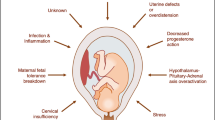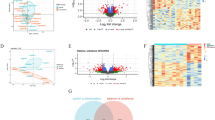Abstract
Recently, increasing importance has been given to neural tube defects (NTDs), considered a congenital disability that affects the brain and the spinal cord. NTD occurs because of genetic information passed from parents to children via genes that affect the brain region’s shape or function. Presently, minimum folate carrier (MFC A80G) gene polymorphism and maternal folic acid interactions are associated with NTD. Therefore, we designed and developed a grey wolf optimizer-assisted deep recurrent neural network to predict the association between gene polymorphism and folic acid interaction in NTD. The information of different control families and nuclear family information was collected to examine the process of polymorphism. Moreover, the homozygous mutant type (GG) genotype mothers and folic acid consumption levels were continuously analyzed to identify the link with and risk of NTD. The simulation analysis was performed to evaluate the statistical results in comparison with those obtained using conventional methods. Given the importance of interactions and associations, this research discusses the optimized deep recurrent neural network-based polymorphism process to identify the NTD risk factors with a lower error ratio of 0.015%. We found that MFC-GG genotype polymorphism and folic acid consumptions are essential and effective in lowering the prevalence of NTD among offspring with maximum accuracy rate of 99.5%.






Similar content being viewed by others
Change history
28 August 2023
This article has been retracted. Please see the Retraction Notice for more detail: https://doi.org/10.1007/s00779-023-01750-z
Abbreviations
- x :
-
input value in gene-environment
- h t :
-
hidden layer output
- U h :
-
previous hidden layer value
- σ h :
-
activation function
- W h :
-
weight value
- b h :
-
bias value
- y t :
-
network output
- α :
-
first grey wolves in the regime
- β :
-
second level of authority
- δ, ω :
-
dominates wolves
- t :
-
current iteration
- \( \overrightarrow{A} \), \( \overrightarrow{c} \) :
-
coefficient vectors
- \( \overrightarrow{x_p}(t) \) :
-
prey position vector
- \( \overrightarrow{x} \) :
-
grey wolf position
- \( \overrightarrow{r_1} \), \( \overrightarrow{r_2\ } \) :
-
random vectors
- \( \overrightarrow{D} \) :
-
wolf’s behavior
- NTD:
-
neural tube defects
- MTHFR:
-
methylenetetra hydrofolate reductase gene
- MFC:
-
minimum folate carrier
- PHC:
-
perinatal health care
- PCR:
-
polymerase chain reaction
- SNP:
-
single nucleotide polymorphism
- ODRNN:
-
optimized deep recurrent neural network
- ANN:
-
artificial neural networks
- MLP:
-
multilayer perceptron
- BPNN:
-
backpropagation neural networks
- RBFN:
-
radial basis function networks
- CDC:
-
Center for Disease Control
- ECG:
-
electrocardiography
- DNA:
-
deoxyribonucleic acid
- OR:
-
odds ratios
References
Feldman EL, Cornblath DR, Porter J, Dworkin R, Scherer S (2008) National Institute of Neurological Disorders and Stroke (NINDS): Advances in understanding and treating neuropathy, 24–25 October 2006; Bethesda, Maryland. J Peripher Nerv Syst 13(1):1–6
Neural Tube Defects (NTDs): Condition Information”. National Institute of Child Health and Human Development, US National Institutes of Health. 2017. Retrieved 30 November 2017.
“Spina Bifida - Data and Statistics”. National Center on Birth Defects and Developmental Disabilities, US Centers for Disease Control and Prevention. 12 October 2016. Retrieved 29 November 2017.
Huang HY, Chen HL, Feng LP (2017) Maternal obesity and the risk of neural tube defects in offspring: A meta-analysis. Obes Res Clin Pract 11(2):188–197
Jutinico CJM, Montenegro-Marin CE, Burgos D, Crespo RG (2019) Natural language interface model for the evaluation of ergonomic routines in occupational health (ILENA). J Ambient Intell Humaniz Comput 10(4):1611–1619
Ibrahim Y, Kamel S, Rashad A, Nasrat L, Jurado F (2019) Performance Enhancement of Wind Farms Using Tuned SSSC Based on Artificial Neural Network. IJIMAI 5(7):118–124
Shakeel PM, Baskar S, Sampath R, Jaber MM (2019) Echocardiography image segmentation using feed forward artificial neural network (FFANN) with fuzzy multi-scale edge detection (FMED). International Journal of Signal and Imaging Systems Engineering 11(5):270–278
Khari M, Garg AK, Crespo RG, Verdú E (2019) Gesture Recognition of RGB and RGB-D Static Images Using Convolutional Neural Networks. International Journal of Interactive Multimedia & Artificial Intelligence 5(7)
Shakeel PM, Tobely TEE, Al-Feel H, Manogaran G, Baskar S (2019) Neural network based brain tumor detection using wireless infrared imaging sensor. IEEE Access 7:5577–5588
Centers for Disease Control and Prevention. (2016). Spina bifida. Retrieved February 23, 2017, from http://www.cdc.gov/ncbddd/spinabifida/facts.html
Goh YI, Koren G (2008) Folic acid in pregnancy and fetal outcomes. J Obstet Gynaecol 28(1):3–13
Anderson CA, Beresford SA, McLerran D, Lampe JW, Deeb S, Feng Z, Motulsky AG (2013) Response of serum and red blood cell folate concentrations to folic acid supplementation depends on methylenetetrahydrofolate reductase C 677 T genotype: Results from a crossover trial. Mol Nutr Food Res 57(4):637–644
Quadros EV (2010) Advances in the understanding of cobalamin assimilation and metabolism. Br J Haematol 148(2):195–204
Dixit R, Singh G, Pandey M, Basu S, Bhartiya SK, Singh KK, Shukla VK (2016) Association of methylenetetrahydrafolate reductase gene polymorphism (MTHFR) in patients with gallbladder cancer. J Gastrointest Cancer 47(1):55–60
Rai AK, Singh S, Mehta S, Kumar A, Pandey LK, Raman R (2006) MTHFR C677T and A1298C polymorphisms are risk factors for Down’s syndrome in Indian mothers. J Hum Genet 51(4):278–283
de Miranda DO, Barros JE, Vieira MMS, Lima EL, Moraes VL, da Silva HA et al (2014) Reduced folate carrier-1 G80a gene polymorphism is associated with neuroblastoma’s development. Mol Biol Rep 41(8):5069–5075
French AE, Grant R, Weitzman S, Ray JG, Vermeulen MJ, Sung L, Greenberg M, Koren G (2003) Folic acid food fortification is associated with a decline in neuroblastoma. Clin Pharmacol Ther 74(3):288–294
Mishra SI, Lucksted A, Gioia D, Barnet B, Baquet CR (2009) Needs and preferences for receiving mental health information in an African American focus group sample. Community Ment Health J 45(2):117–126
Wang SS, Wang C, Qiao FY, Lv JJ, Feng L (2013) Polymorphisms in genes RFC-1/CBS as maternal risk factors for Down syndrome in China. Arch Gynecol Obstet 288(2):273–277
Simon, N., Shallat, J., Williams-Weitzikoski, C., & Harrington, W. E. (2020). Optimization of Chelex 100 Resin-Based Extraction of Genomic DNA from Dried Blood Spots. Biology Methods and Protocols.
Källén, B. (2014). Neural Tube Defects. In Epidemiology of Human Congenital Malformations (pp. 21-25). Springer, Cham.
Li L, Wang J, Wu J (2012) A spatial model to predict the incidence of neural tube defects. BMC Public Health 12(1):1–10
Zheng J, Lu X, Liu H, Zhao P, Li K, Li L (2015) MTHFD1 polymorphism as maternal risk for neural tube defects: a meta-analysis. Neurol Sci 36(4):607–616
O’Leary, L. D., Murray, S., Conley, M., Mayne, P. D., Kirke, O. P. N., Mills, J. L., ... & Valerie, B. Impact of the MTHFR C677T polymorphism on.
Cai CQ, Fang YL, Shu JB, Zhao LS, Zhang RP, Cao LR, Wang YZ, Zhi XF, Cui HL, Shi OY, Liu W (2019) Association of neural tube defects with maternal alterations and genetic polymorphisms in one-carbon metabolic pathway. Ital J Pediatr 45(1):37
Jongbloet PH, Verbeek AL, den Heijer M, Roeleveld N (2008) Methylenetetrahydrofolate reductase (MTHFR) gene polymorphisms resulting in suboptimal oocyte maturation: a discussion of folate status, neural tube defects, schizophrenia, and vasculopathy. Journal of Experimental & Clinical Assisted Reproduction 5(1):1–8
López-Martínez F, Núñez-Valdez ER, Crespo RG, García-Díaz V (2020) An artificial neural network approach for predicting hypertension using NHANES data. Sci Rep 10(1):1–14
Iqbal, U., & Ghazali, R. (2016, August). Chebyshev multilayer perceptron neural network with Levenberg Marquardt-back propagation learning for classification tasks. In International Conference on Soft Computing and Data Mining (pp. 162-170). Springer, Cham.
Masson, A., Cazenave, G., Trombini, J., & Batt, M. (2020). The current challenges of automatic recognition of facial expressions: A systematic review. AI Communications, (Preprint), 1-26.
Liu K, Xu S, Feng N (2019) A radial basis probabilistic process neural network model and corresponding classification algorithm. Appl Intell 49(6):2256–2265
Pei L, Liu J, Zhang Y, Zhu H, Ren A (2009) Association of reduced folate carrier gene polymorphism and maternal folic acid use with neural tube defects. Am J Med Genet B Neuropsychiatr Genet 150(6):874–878
Fouad H, Hassanein AS, Soliman AM, Al-Feel H (2020) Internet of medical things (IoMT) assisted vertebral tumor prediction using heuristic hock transformation based gautschi model–A numerical approach. IEEE Access 8:17299–17309
Alsiddiky A, Fouad H, Soliman AM, Altinawi A, Mahmoud NM (2020) Vertebral Tumor Detection and Segmentation Using Analytical Transform Assisted Statistical Characteristic Decomposition Model. IEEE Access 8:145278–145289
Fouad H, Soliman AM, Hassanein AS, Al-Feel H (2020) Prediction and diagnosis of vertebral tumors on the Internet of Medical Things Platform using geometric rough propagation neural network. Neural Comput & Applic:1–13
Mahmoud, N. M., Fouad, H., Alsadon, O., & Soliman, A. M. (2020). Detecting dental problem related brain disease using intelligent bacterial optimized associative deep neural network. Cluster Computing, 1-11.
Acknowledgements
The authors would like to extend their gratitude to King Saud University (Riyadh, Saudi Arabia) for funding this research through Researchers Supporting Project number (RSP-2020/241).
Author information
Authors and Affiliations
Corresponding author
Ethics declarations
Conflict of interest
The authors declare no competing interests.
Additional information
Publisher’s note
Springer Nature remains neutral with regard to jurisdictional claims in published maps and institutional affiliations.
This article has been retracted. Please see the retraction notice for more detail: https://doi.org/10.1007/s00779-023-01750-z
Rights and permissions
Springer Nature or its licensor (e.g. a society or other partner) holds exclusive rights to this article under a publishing agreement with the author(s) or other rightsholder(s); author self-archiving of the accepted manuscript version of this article is solely governed by the terms of such publishing agreement and applicable law.
About this article
Cite this article
Mustafa, I., Saad, A., Mahmoud, M.H. et al. RETRACTED ARTICLE: Analyzing gene polymorphism and metal folic acid interactions in neural tube defects using optimized deep recurrent neural networks. Pers Ubiquit Comput 27, 861–873 (2023). https://doi.org/10.1007/s00779-021-01538-z
Received:
Accepted:
Published:
Issue Date:
DOI: https://doi.org/10.1007/s00779-021-01538-z




